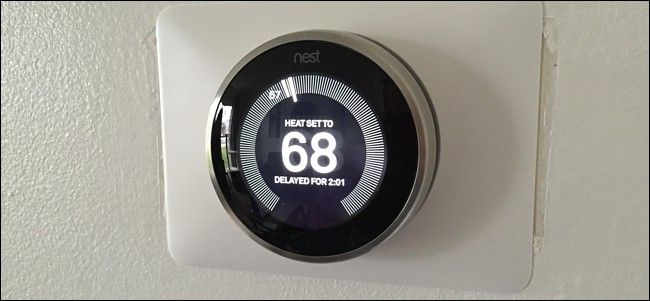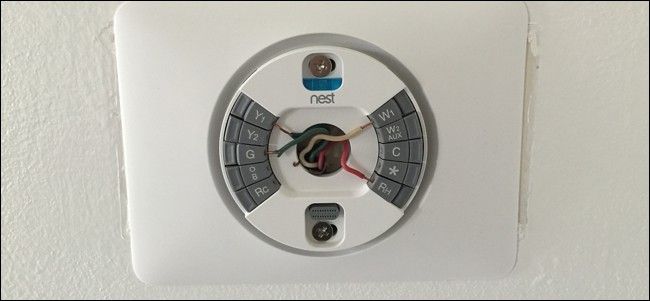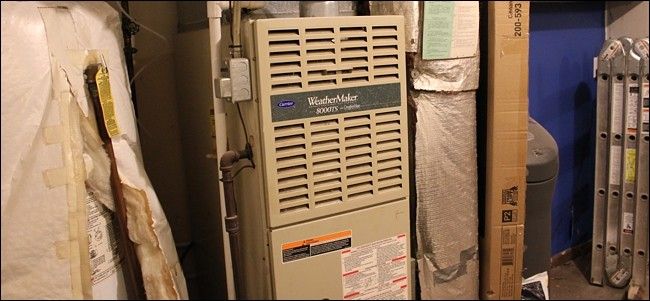Quick Links
It may sound preposterous, but some people are afraid smart thermostats are bad for heating and air conditioning systems. Here's the good news: You don't have much to worry about, but there are some important things to keep in mind.
A relatively recent post on Reddit recounted an HVAC technician's warning about smart thermostats:
"He said he never recommends them and that their company is REGULARLY replacing systems that have failed or prematurely broken down due to the Nest overworking the computing systems/motherboards built in to most HVAC units---even brand new models."
The technician isn't completely full of it. If your smart thermostat isn't wired up correctly, then it can cause problems for your HVAC system. However, his explanation is mostly filled with a lot of FUD (Fear, Uncertainty, and Doubt.)
It's All About the C Wire, Baby
Every thermostat has a handful of wires connected to it (either four or five) that lead back to the electrical control board of your HVAC system. Each wire is usually responsible for something specific, like one wire is for cooling, and another wire is for heating. Many systems have a "C wire" (or "common wire"), which is dedicated to providing electricity to the thermostat to power the screen and other electronic functions.
Older systems usually don't have a C wire, though, because back then thermostats didn't require electricity thanks to the fully mechanical operation of mercury-switched thermostats. But today, most modern thermostats have more bells and whistles, which require electricity to run. Thus, the purpose of the C wire.
A C wire isn't necessarily required for smart thermostats, but it's highly recommended. And if your thermostat's wiring includes a C wire, you should connect it to your smart thermostat---most problems that arise due to the smart thermostat happen because there's no C wire connected to it.
However, it's not the end of the world if your HVAC system doesn't provide a C wire for your thermostat, as a smart thermostat could work just fine with your particular system. My system doesn't provide a C wire, but I've used both Nest and Ecobee thermostats without a problem. However, I installed the Power Extender Kit that came with my Ecobee3, which provided a solution for the missing C wire (more on that later).
What Happens When Your System Doesn't Have a C Wire
If you want to install a smart thermostat, but your system doesn't supply a C wire, you're not completely out of luck. Like me, you might have an HVAC system that will still play nice with a smart thermostat without a C wire, thanks to something called "power stealing."
This sounds bad (and it can be), but it can work fine for some systems. Power stealing works by drawing a small amount of power from the other wires when the heating or air conditioning is running. If you don't run your system often enough, then your smart thermostat itself will briefly power on the HVAC to suck up some power for a short while.
However, this same method may not work properly on your particular system and could result in a short circuit or possibly damage components over the long term. If that's the case (or you're unsure if a smart thermostat would work with your system), I'd recommend calling an HVAC professional to inspect your setup and see if it's feasible to install a smart thermostat without a C wire.
What If You Don't Have a C Wire?
If your HVAC system doesn't have a C Wire for the thermostat, as mentioned above, you may not need to worry about it. However, if you want to play it safe, there are a couple of things you can do.
First off, your best bet is to have an HVAC technician come in and install a C wire to be able to use a smart thermostat without worry. This usually involves completely removing the existing wiring and running all new wiring that includes a C wire. It's a pretty easy job for an electrician or an HVAC technician.
Some smart thermostats also offer adapter kits (like the Power Extender Kit for Ecobee thermostats. You can also buy universal kits) that can add a semi-faux C wire to your HVAC system via the control board. It's not quite as nice as just having a real C wire, but it's certainly better than nothing and will get the job done.
In the end, play it safe and make sure that your thermostat's wiring comes with a C wire. If not, you may still be okay, but it's probably a good idea to install a C wire or an adapter kit anyway.




